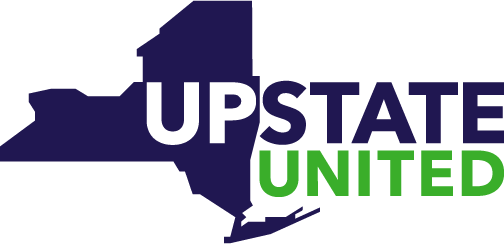Albany Times Union: Upstate New York sees minimum wage rise to $15.00
December 26th, 2023
Capital Region employers already pay more, though, due to labor shortage
Click here to read the full article by Rick Karlin.
ALBANY — The minimum wage across upstate New York is rising to $15.00 from $14.20 on Jan. 1 – but even those who opposed the move see it as a non-event, at least in the Capital Region.
Low unemployment rates of the last few years – and a persistent post-COVID-19 shortage of employees in a variety of sectors – mean that most jobs already pay more than $15 an hour, at least in the Capital Region and Hudson Valley. Minimum wage downstate including New York City, Westchester and Long Island, is going to $16 from $15 an hour.
“The markets have already reacted. We are already there,” said Justin Wilcox, executive director for Upstate United, an organization that advocates for upstate New York businesses and taxpayers.
“The hourly rate that gets all the stress is not that noteworthy for employers because of the job market,” added Frank Kerbein, director of the Center for Human Resources at The Business Council of New York State.
“In Albany, $15 an hour at McDonald’s is no big deal,” he said.
Still, employment experts say the increase will make a difference in some of the economically depressed parts of upstate, such as the Southern Tier or northern New York.
And the state Department of Labor estimates that the increase will raise the hourly pay for about 1 million people out of a workforce of nearly 9.8 million.
Supporters of the increase, who for years engaged in a “Fight for 15,” say this puts more money into the pockets of the lowest-paid New Yorkers, who will pump that money back into the economy.
It means “more customers in the local economy, more people with money in their pockets to spend,” remarked Michael Kink, executive director of the Strong Economy for All, a coalition of unions and community groups that helped push for the increase.
But business groups say the increase will almost certainly speed the automation of more entry-level jobs, such as those at fast food restaurants and retailers.
That means there will be even more self-service checkout lanes in grocery stores and touch screen kiosks at fast food restaurants.
“Each time we increase the minimum wage we make it easier to invest in technology,” said Wilcox. He also noted that many minimum wage jobs or those close to the minimum, are held by teenagers or those who are new to the workforce. There is disagreement on that point, but the automation will eliminate more of those jobs either way.
The minimum wage increase, though, will also drive up pay for those who are not hourly employees or who are in mid-level positions at many businesses.
In addition to the natural upward pressure, New York has a little-known provision regarding “exempt” employees, or those who get a weekly salary rather than an hourly wage.
Based on wage orders, or policy decisions that have been made over the years by the state Department of Labor, the pay for an exempt employee should be 75 times the hourly rate, on a weekly basis.
Kerbein gives the example of a non-hourly bookkeeper or office manager at a fictional plumbing supply house in Elmira, where there still may be lots of minimum wage workers.
If their hourly wage rises from $14.20 to $15, their annual pay would increase from $29,536 to $31,200, based on a 40-hour week and a 52-week year.
The bookkeeper’s pay, at the 17 times formula, would go from $55,300 to $58,500.
This policy is not well known and Kerbein said that many businesses are not aware of the requirement. The state, he said, has done little outreach on this and it’s unclear how widely or vigorously it’s enforced.
But from a business-risk standpoint, it represents a liability. “It’s kind of a complicated concept but I think it’s important,” Kerbein said.
Kink said that clause, though, also helps working people who can then spend money in their local economies.
“We would view increased salaries for working class people as a positive thing,” he said.
Overall though, Kink agreed with business leaders that in the current economy, the low unemployment is what is driving up pay, more than an 80-cent-per hour increase.
“The lack of people to fill job openings is probably a more important factor in the labor market right now than a modest adjustment in the minimum wage,” he said.
